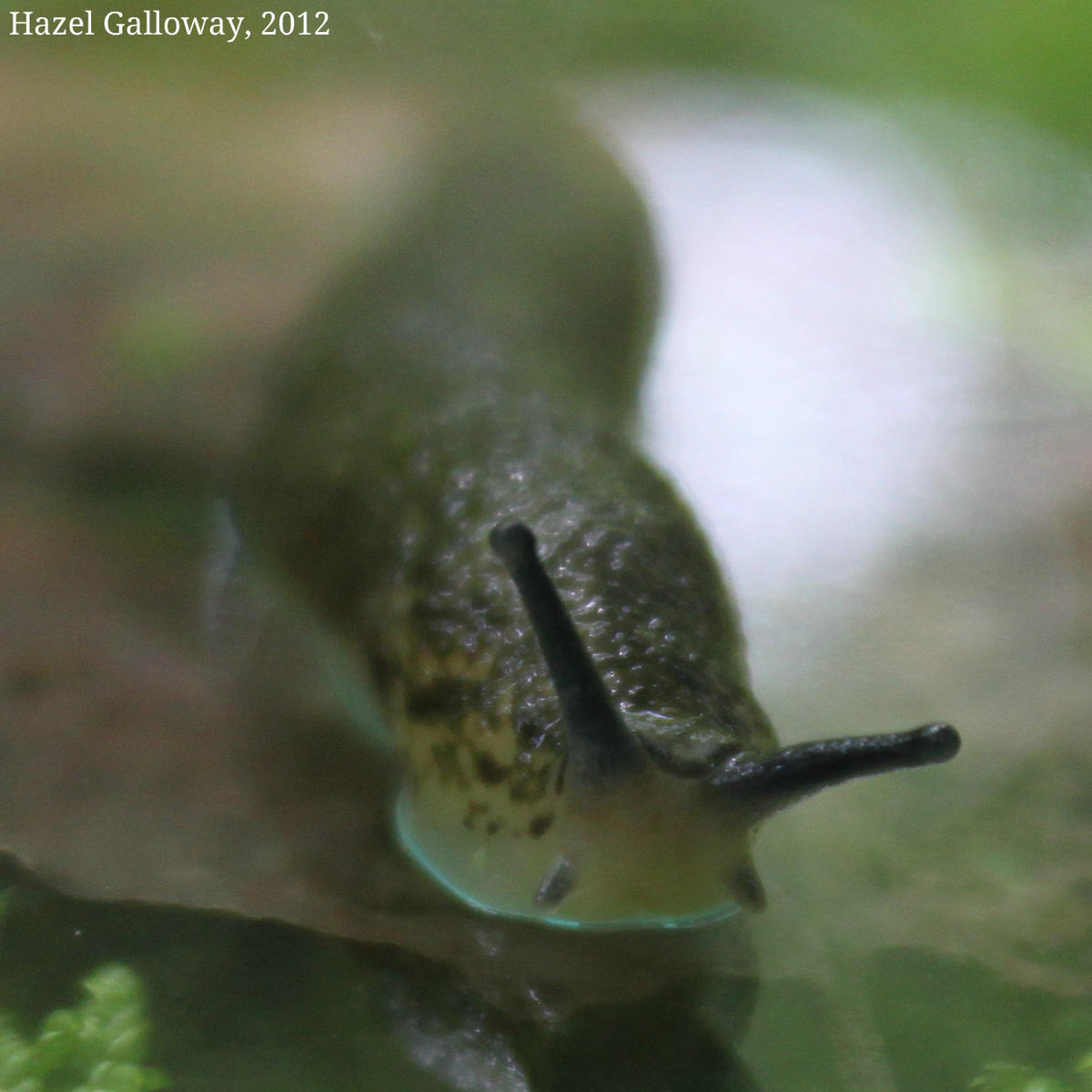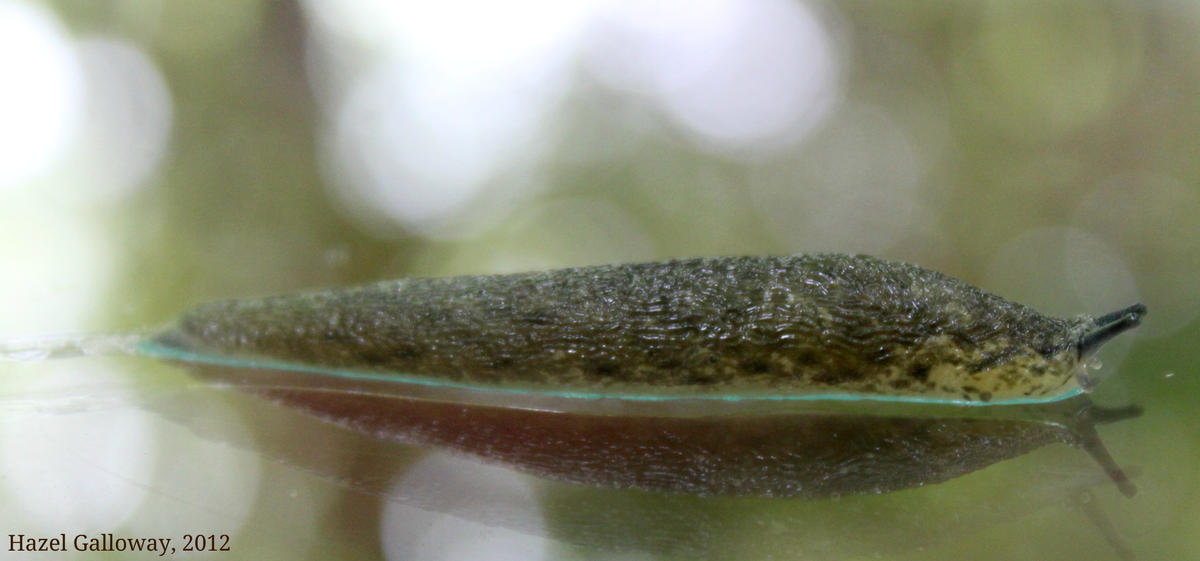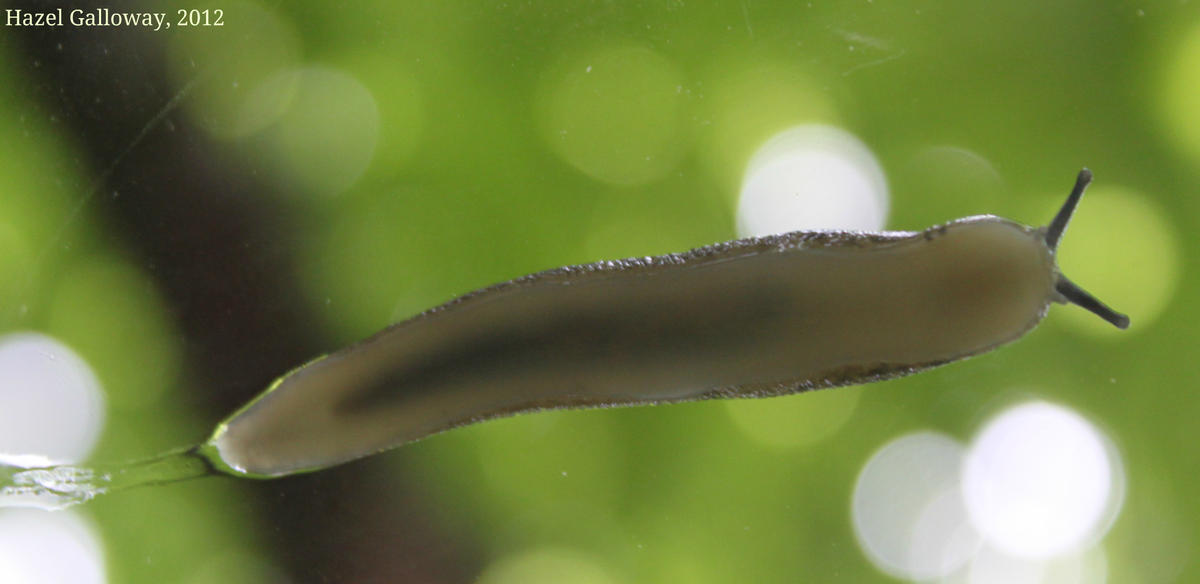 Terrestrial slugs in the genus Philomycus belong to the family Philomycidae, or all mantleslugs. These slugs are so called because the mantle, a protective dorsal structure that manifests itself as a shell in most other mollusks but is generally reduced and small in terrestrial slugs, is unusually large and covers the entire dorsal surface of the slug. These slugs have rounded or cylindrical bodies with smooth, shiny skin. The dorsal surface is a dark color, with patterns varying depending on the species, while the foot is a paler color. Slugs in this genus can reach 10 cm (4 in) in length, and P. carolinianus can reach 8 g. in weight (about the weight of a sharpie).
Terrestrial slugs in the genus Philomycus belong to the family Philomycidae, or all mantleslugs. These slugs are so called because the mantle, a protective dorsal structure that manifests itself as a shell in most other mollusks but is generally reduced and small in terrestrial slugs, is unusually large and covers the entire dorsal surface of the slug. These slugs have rounded or cylindrical bodies with smooth, shiny skin. The dorsal surface is a dark color, with patterns varying depending on the species, while the foot is a paler color. Slugs in this genus can reach 10 cm (4 in) in length, and P. carolinianus can reach 8 g. in weight (about the weight of a sharpie).
Mantleslugs in the genus philomycus can be found throughout much of eastern North America, from southern Canada as far south as Florida, and west as far as Texas. They are denizens of moist, deciduous forests, particularly those dominated by maple and beech. These slugs can be found on or under the bark of rotting wood or fallen logs or in the leaf litter, hunting out their favorite treat: fungus. As is indicated by their genus and family name, philo (having an affinity or love for) mycus (fungus), these slugs consume fungus almost exclusively, although they have also been known to feed on slime molds and algae Even though they have been described as a “sleepy and inactive” genus of slugs, they can become quite active in moist conditions or at night. These mantleslugs, unusually among slugs, are rarely aggressive towards one another, even in high densities.

In late spring and early summer, these slugs mate and lay clutches of around 20 eggs under the bark of rotting logs. Like many other snails and slugs, these mantleslugs are hermaphrodites (they have both male and female sex organs). Although this has not been specifically observed in P. carolinianus, it is very likely that the mating pair will engage in reciprocal sperm exchange, culminating with both partners laying eggs. The eggs, which are just under a ½ centimeter in diameter and translucent white in color, hatch into miniature versions of the adult slug. Much is unknown about their reproduction and juvenile life stages. However, it is known that their genus is one of a few groups of terrestrial slugs and snails known to use a “love dart” when mating, a specialized organ usually less than half a centimeter in length (but quite massive relative to the size of the slug). Shaped like a dart or spear, it is pushed out of a mating slug and used to pierce a partner during the mating process. Although it was historically thought that it served the purpose of sexual stimulation, it is now believed that the purpose of the love dart is to transmit a hormone which impairs the function of an apparatus which digests some sperm cells in slugs and snails, leaving only the healthiest to fertilize the eggs. If this apparatus is temporarily impaired, more of the sperm cells from the mating slug will fertilize its partner’s eggs, as opposed to the sperm of another partner. Successful use of a love dart when mating can double the chance of fertilization success in snails. It has also been observed in snails that partners actively avoid being hit with the other snail’s love dart, creating a scene resembling “jousting” while mating.
This mantleslug was found under a rotting log near the woodshed, doubtless enjoying the cool and rainy day as it foraged for tasty fungi.



